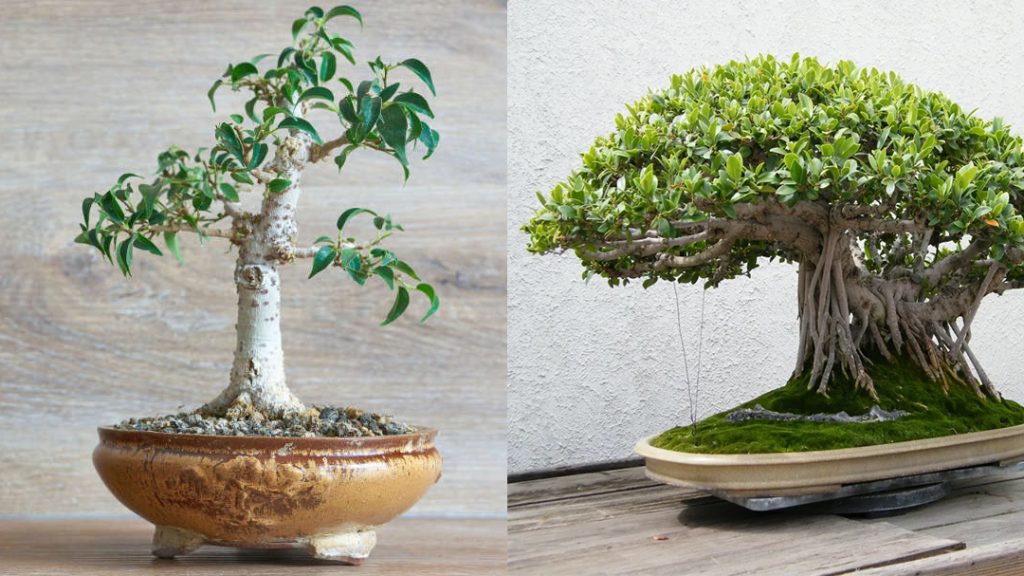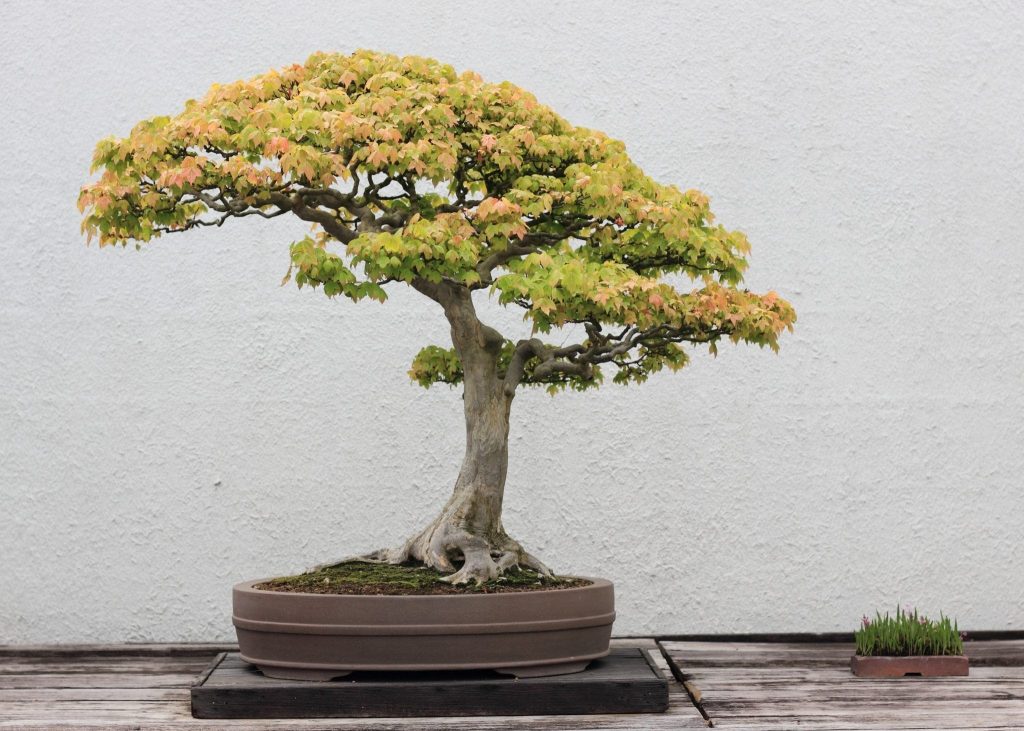When you first start with bonsai, it’s natural to wonder how fast bonsai trees grow and how long it will take to see real progress. The honest answer: bonsai growth is slow and steady, but with the right care you can still see noticeable changes every year.
If you’re still getting comfortable with the basics like watering, light, and soil, the Bonsai Tree Care guide is a great companion so your tree stays healthy while it slowly develops structure.
Contents
- 0.1 Understanding How Fast Bonsai Trees Grow
- 0.2 Average Growth Rates for Common Bonsai Species
- 0.3 What Affects How Fast a Bonsai Tree Grows?
- 0.4 How to Encourage Healthy Bonsai Growth (Without Ruining the Shape)
- 0.5 How Fast Do Bonsai Trees Grow in Different Stages?
- 0.6 Can You Speed Up How Fast Bonsai Trees Grow?
- 0.7 FAQs: How Fast Do Bonsai Trees Grow?
- 0.8 Final Thoughts on How Fast Bonsai Trees Grow
- 0.9 Related Articles
- 1 Choose the Best Bonsai Pot for Healthy Growth
Understanding How Fast Bonsai Trees Grow
Bonsai trees are normal trees grown in small containers and kept compact through pruning and root work. That means their genetics haven’t changed – a fast-growing species in the ground is still relatively fast in a pot, and a naturally slow species will stay slow.
What changes is:
The amount of soil and root space they have
How often you prune branches and roots
The light, water, and feeding you give them
So when you ask how fast bonsai trees grow, you’re really asking how quickly your chosen species can put on new shoots, thicken the trunk, and mature while being kept in a small pot.
In practice, you’ll usually see small changes week by week, and big differences when you compare photos year by year.
Average Growth Rates for Common Bonsai Species
Exact numbers vary by climate and care, but you can think in rough ranges when you’re learning how fast bonsai trees grow.
Fast growers (noticeable change every season):
Chinese elm
Ficus
Privet
These can push out lots of new shoots in one growing season and respond quickly to pruning.
Medium growers (steady but not explosive):
Juniper
Maple (Japanese maple, trident maple)
Many pines
You’ll see a visible thickening and new branching over a few years, especially in the ground or large training pots.
Slow growers (long-term projects):
Some conifers and dwarf species
Certain compact varieties bred to stay small
These may only extend shoots a few centimetres a year and take many years to build a thick trunk.
For most beginners, a tree will need 3–5 years of growing, pruning, and repotting before it starts to look like a proper bonsai, and 10+ years to develop that really mature, “old tree” feel.

What Affects How Fast a Bonsai Tree Grows?
To understand how fast bonsai trees grow in your care, it helps to look at the main factors that speed things up or slow them down.
1. Species and age
Some trees are naturally quick to throw out new shoots; others are slow, dense, and compact. Younger trees generally grow faster than very old, established bonsai.
2. Pot size and root space
A tree in a larger training pot with more soil can grow much faster than one in a very shallow show pot. More root space = more water and nutrients = more growth.
3. Light and temperature
Trees kept in good light (often outdoors for much of the year) tend to grow more strongly than those kept in dark corners. Warm, bright growing seasons usually mean more growth than cool, dull summers.
4. Watering and feeding
Consistent watering and sensible feeding help trees put on healthy growth. Too little water or nutrients slows growth; too much can damage roots and weaken the plant.
5. Pruning style
Heavy pruning can slow visible growth for a while, but it’s needed to build the right structure. Light, regular pruning often keeps growth compact but still active.
According to guidance from bonsai experts and organisations, the quickest progress usually comes when trees spend as much time as possible in strong, natural light with good airflow, rather than being kept permanently indoors.
How to Encourage Healthy Bonsai Growth (Without Ruining the Shape)
You can’t force a bonsai to grow like a weed, but you can gently nudge it to grow as well as its genetics allow.
- Give it the best light you can
Outdoors in bright, indirect light for part of the year is ideal for many species. Indoor-only bonsai often grow slower and weaker. - Use a well-draining bonsai soil
Free-draining soil lets you water thoroughly without suffocating roots. Healthy roots = consistent growth. - Water deeply and consistently
Let the top of the soil start to dry, then water until excess drains out. Avoid both bone-dry soil and constantly soggy conditions. - Feed lightly but regularly in the growing season
A balanced bonsai fertiliser applied at low strength every few weeks helps your tree build new shoots and thicken branches over time.
A mild organic bonsai fertiliser is ideal if you want to encourage steady, controlled growth without forcing the tree. - Use a training pot in early years
When you’re building trunk thickness and basic structure, keep your tree in a slightly larger training pot rather than a tiny display pot. Move to a shallow bonsai pot once the main structure looks right.
How Fast Do Bonsai Trees Grow in Different Stages?
It helps to think about bonsai development in stages, because how fast bonsai trees grow – and how much you allow them to grow – changes over time.
1. Trunk-building stage
Here, the goal is to thicken the trunk and create taper.
Tree may be grown in the ground, a large container, or a big training pot.
Growth is encouraged: full light, generous water, and more feeding.
Structural pruning is done to set the main trunk line and remove bad branches.
In this stage, growth can be quite fast, especially for vigorous species. Several years of strong growth might be needed to reach the trunk thickness you want.
2. Primary branch and structure stage
Once the trunk is the right size, you focus on main branches.
Growth may be slightly controlled, but you still allow shoots to extend so you can cut back and build shape.
Wiring and pruning are used to position main branches.
Progress is slower than trunk-building, but you’ll still see changes each year as the structure improves.
3. Refinement stage
Now you refine fine branching and detail.
Growth is more controlled; you don’t want branches to thicken too much.
Regular pinching and light pruning create ramification (lots of small twigs).
Root pruning during repotting keeps the tree healthy and compact.
This is where bonsai feels slowest: the tree may only change a little each season, but over several years the canopy becomes more dense and refined.
Can You Speed Up How Fast Bonsai Trees Grow?
You can’t completely change a species’ natural pace, but you can avoid holding it back. To gently speed up progress:
Use larger training pots for trees still building trunks.
Let some shoots grow longer before pruning, then cut back to build taper and thickness.
Keep up with feeding in spring and summer, especially for vigorous species.
Protect trees from extremes: strong drying winds, intense midday sun, or severe frost.
Good tools make it easier to stay on top of pruning and repotting. A sharp pair of bonsai pruning shears helps you make clean cuts that heal well and encourage healthy new growth.
Remember: with bonsai, “faster” doesn’t mean rushing. It means setting up the conditions that let your tree grow well and stay healthy while you guide its shape.

FAQs: How Fast Do Bonsai Trees Grow?
1. How long does it take for a bonsai to look “finished”?
Most bonsai need at least 3–5 years before they start to look like a proper tree in a pot, and often 10 years or more to develop a really mature appearance. The exact timeline depends on species, age, and how much time they spent in larger training pots.
2. Do bonsai trees ever stop growing?
No. As long as they’re healthy, bonsai trees keep growing slowly throughout their lives. Pruning and root work simply control how and where that growth happens so the tree stays small and in proportion.
3. Which bonsai species grow the fastest?
Chinese elm, ficus, and some maples are relatively fast growers and good if you want to see visible progress sooner. Many conifers and dwarf species are slower and better suited to long-term projects.
4. Why is my bonsai not growing much?
Common reasons include low light, poor soil, under-watering or over-watering, lack of feeding, or a pot that’s far too small for the stage your tree is in. Improve light and basics first, then review pruning and pot size.
5. Can indoor bonsai grow as fast as outdoor bonsai?
Usually not. Trees grown outdoors in good light and fresh air often grow faster and stronger than those kept indoors all year. Indoor bonsai can still do well, but growth rates are typically slower.
Final Thoughts on How Fast Bonsai Trees Grow
When you first learn how fast bonsai trees grow, it can feel a bit discouraging – especially if you’re used to quick-growing houseplants. But that slow, steady pace is part of what makes bonsai so rewarding. Each year adds subtle layers of character: thicker trunks, better branch structure, and a canopy that feels more and more like a real, old tree in miniature.
Focus on giving your bonsai the best conditions you can – light, soil, water, and thoughtful pruning – and think in years rather than weeks. Take photos, compare from season to season, and you’ll start to see just how much progress your tree is making, even if you don’t notice it day to day.
Related Articles
GROW BETTER BONSAI IN LESS TIME
Choose the Best Bonsai Pot for Healthy Growth
If you want your bonsai to grow at the right pace and develop strong roots, the pot you choose matters just as much as pruning. The Best Bonsai Pot for Indoor Trees guide explains pot shapes, sizes, and drainage so you can match each tree to a container that supports healthy, steady growth.

